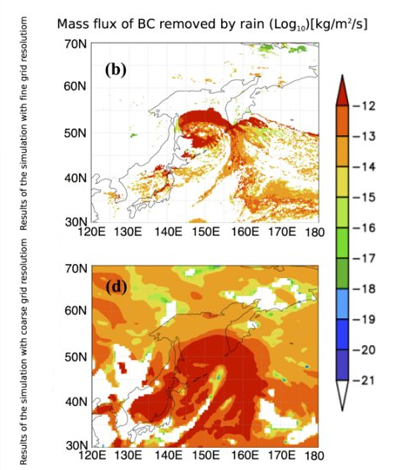Smaller Grids Improve Black Carbon Aerosol Estimates In Arctic

Global aerosol transport simulation using the K computer. (Credit: RIKEN)
Black carbon aerosol particulates produced by incomplete burning of biomass, fossil fuels and agricultural waste can influence the Arctic climate by absorbing sunlight and causing atmospheric warming. They can also darken the snow, reducing reflectance and warming the ground.
Although current computer simulations incorporate both global climate and aerosol transport models, they typically underestimate the contributions of black carbon aerosols to Arctic climate. Researchers at RIKEN research institute, however, have found that the key for more accurate modeling of the particulates’ contribution is to use a smaller, fine-grained grid.
Scientists used the Japanese K computer in their efforts to improve Arctic climate simulations. The use of a fine-grained grid instead of coarse-grained meant the atmosphere was broken up into 3.5-kilometer grids divided into 38 vertical layers, resulting in 1.6 billion grids to simulate the entire globe. The simulation required 17 hours to perform on the 10-petaflop computer.
Although the fine-grained grid approach significantly improved the match between actual spring and winter aerosol measurements and simulations, the differences were not completely eliminated. More particulate measurements and more powerful computers are expected to aid in future simulation success.
Top image: Global aerosol transport simulation using the K computer. (Credit: RIKEN)




0 comments